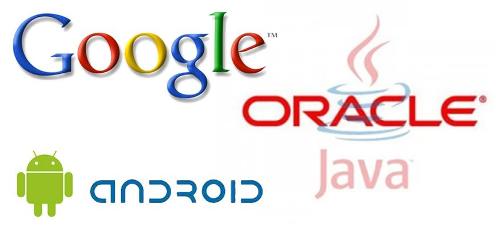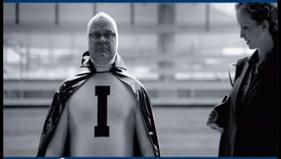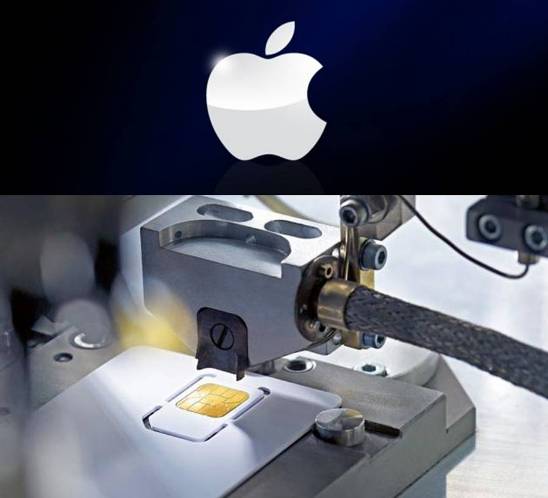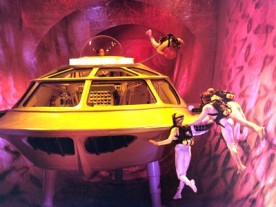
Here is a quick scattershot list of the main technical and practical problems that are gracefully skirted in the well-crafted video. In writing this, my critique of the technology ad in no way implies that this is disingenuous on the part of Corning and their technology-marketing team. I am simply pointing out the subtle blurring that is used to make the lasting impression of a technology-innovation leader. All companies use some form of this in their advertising, but technology advertising tends to overplay the role of tech advances in order to lull the viewer into buying into the entire ad pitch. So, caveat emptor, now back to the list of the video’s weak points.
- Brightness of displays and 3D projections in natural and bright lighting – can technology meet the luminosity depicted?
- Closet displays that provide categorization of wardrobe – who’s organizing the closet, and updating the information?
- Car dashboard veneer – will these withstand constant sun exposure, or even be viewable on the first sunny day?
- Remote 3D projection rendering of patient on MRI table – how much bandwidth would be required?
- Wall-format display glass on field trip – what about environmental debris?
- Camera in a transparent sheet of glass – no need for lenses or a shutter?
These are just a few examples. But, let’s be open-minded, and think big. Is it possible? Oh, but this isn’t “Corning’s World of Science” segment; this will also have a compelling economic driver to create all this synergy. So, tell me, would you pay for a computerized wardrobe closet? Thankfully, Guy tells us that the closet door is being powered by Amy’s tablet (I assume with tomorrow’s processors and batteries in it); the closet itself only has a small footprint OS (and requisite hardware). Okay, so we have many panes of glass to relieve the many pains in accessing and organizing our information when we need to. But, is electronically classifying our wardrobe really helpful when the physical garments still need to be manually sorted?
No video conferencing on the countertop while we’re chopping the vegetables and cooking on it at the same time as in the first technology-marketing video, but the corporate partnering required to pull off such a vision (even ignoring the technical hurdles) just makes me think of a more realistic montage in which Amy is trying to review her day and attire while being bombarded with ads from clothing and other corporate sponsors. At every turn, they would be informing Amy of the health benefits of a hearty breakfast, while suggesting what cereal might interest her (of course based on her preferences) – hardly what one would call unobtrusive.
By the time she makes it to the car with her sister, these questions have been dispelled by the cotton-candy dashboard oozing pretty, pink hearts. Actually, besides the contrast and durability issues with the dash I mentioned above, I think this seems reasonably achievable from the point of view of technology innovation. Mesh networks could link Sarah’s tablet to the car’s system, but I’m not sure the rolling dash could withstand everyday vehicle wear and tear. Guy asks us, “How close are we to this? It’s doable now, but not at this scale, and not at an affordable price.” Thanks Guy.
The most convincing segment of the technology ad to me was the classroom instruction with the wall-format glass display. The lecture and interactive color table were good examples. This is already being done in industrial settings, but not as slick as shown in the video. Next, we get to the hospital with Dad videoconferencing a colleague in Asia who is performing an MRI on a patient. After dynamically reviewing some e-charts with the colleague, a technician sends Dad a full 3D projection rendering of the patient (and all its inclusive data). Dad is seen miraculously lifting tomographic brain slices above our patient’s body (that is, the rendering of the body). Wow! Can you imagine the bandwidth required just to transfer the data? I can’t. Guy can’t either.
Guy says breathlessly, “Pretty amazing, isn’t it? All that data, captured a world away, transported, then displayed here, all in the blink of an eye. Wow! Although . . . just imagine the bandwidth needed to carry the data for this projection, and for that next-generation, high-definition, glass-video display . . . simultaneously. Yep . . . a lot!” While he says that Corning is working on this, optical fiber probably already has the capacity today, but the infrastructure and ancillary technology remain the bottlenecks to realizing the benefits of the technology innovation shown in video.
Amy gets a great Jurassic Park-like experience on her field trip with the ranger swiping that huge, glass wall as the multimedia dinosaur show triumphs over the bright rays of the midday sun. The glass-barrier function and augmented reality are cute and utilitarian, but what about the elements like rain, stains, bird droppings, and even graffiti. It seems you wouldn’t want to be swiping that wall after a while (besides the adverse effect on responsiveness and sensitivity). Amy’s tablet camera is the ultimate in built-in functionality, reduced to just the appearance of pristine, sheet glass in the technology-marketing clip. Lenses are presumably embedded in the thin glass panel. Could electrochromic glass technology be engineered to meet the demands of a camera shutter? Okay, I think I’ve made my point, so let’s look at what Corning wants to do with this.
The dream of highly-engineered glass having invisible, embedded technologies is the platform that Corning wants to have us believe in. Forget about the details that the technology ad leaves out. They would want you to believe that these can be overcome with industry-spanning R&D and the natural pace of technical advancement. Just look at their current line of specialty products – Gorilla Glass (which is prominantly included on many mobile devices), its successor Lotus Glass (already being marketed extensively as a breakthrough), and the recently-unveiled, flexible, roll-to-roll Willow Glass. But, you see, when it comes to technology innovation, the details do matter. They make or break feasibility assessments. Corning’s branding strategy is to stand on the shoulders of Apple, Samsung, and others, to proudly proclaim that they are making the transition to pervasive computing possible. To some extent, this is true. However, I doubt you would see a battery company preemptively take credit for the monumental transformation shown in the video.
No, Corning actually already has strong brand equity, with their specialty glass and ceramic products being not on the interior of devices, but on the contacting surface of all touch-enabled appliances. No wonder the tablet was added into every scene of the sequel. It makes the branding strategy so much easier than something like Intel Inside. So, if one looks at the way IP is being leveraged to help Corning advance its position through carefully-executed technology marketing, it’s clear that an over-the-top campaign is better than a playing-it-safe ad with a bunch of engineers in labcoats and goggles staring at an oven of molten glass. They employed an IP strategy known as value transference. Patents cover the core technology, while the trademarks span well beyond the applications of the technology per se in the consumer’s mind. A well-executed, flagship, marketing strategy wrapped up in a set of fun, compelling vignettes of how we will live and interact in the not-so-distant future. Pretty amazing, isn’t it?












